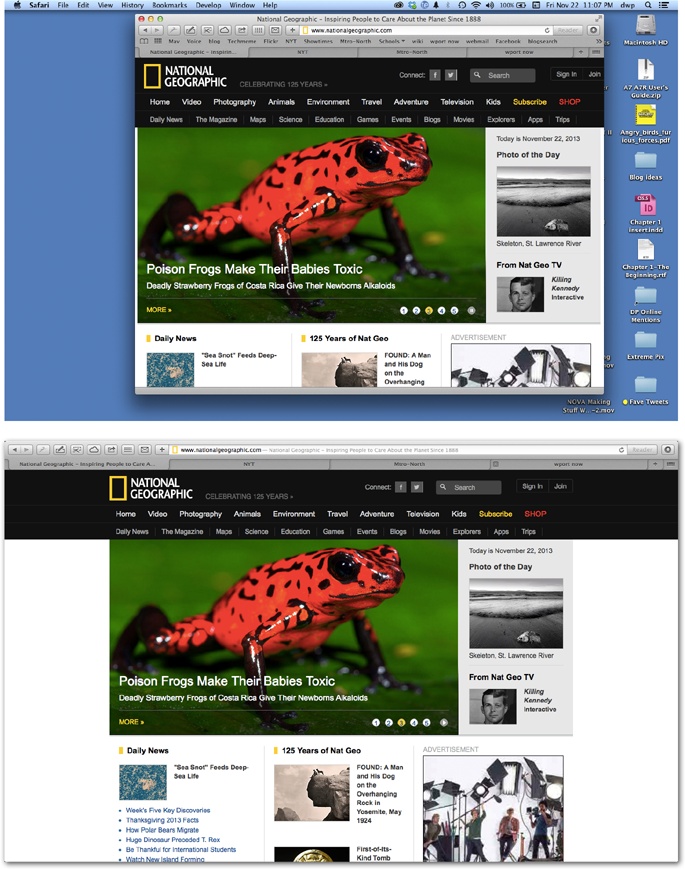Features are great and all. But the more of them your software accumulates, the more toolbars and icon panels fill the screen, and the bigger the clutter problem becomes. After awhile, all that “chrome” (as software designers call it) winds up crowding out the document you’re actually trying to work on.
That’s why Apple invented Full Screen mode. It’s not available in all programs, but it’s showing up in more and more of them. In Mavericks, you’ll find the Full Screen button (![]() ) in the upper-right corner of App Store, Calendar, Chess, Final Cut Pro, Font Book, Game Center, GarageBand, iBooks, iMovie, iPhoto, iTunes, Keynote, Mail, Maps, Messages, Notes, Photo Booth, Preview, Safari, and others.
) in the upper-right corner of App Store, Calendar, Chess, Final Cut Pro, Font Book, Game Center, GarageBand, iBooks, iMovie, iPhoto, iTunes, Keynote, Mail, Maps, Messages, Notes, Photo Booth, Preview, Safari, and others.
When you click that button, the Mac hides the menu bar, scroll bars, status bars, and any other bars or palettes surrounding your work area. The window’s edges expand all the way to the edges of the screen (Figure 4-7).
Figure 4-7. Top: So much for the glorious Web. You’re seeing a Web page segment, swimming in an ocean of toolbars, scroll bars, status bars, menu bars, and distracting desktop. Bottom: In Full Screen mode, Safari stretches to the very edges of your screen, and everything else disappears. (Your address bar and tab bars are still available in this case.) Each full-screen app becomes its own desktop in Mission Control. And you can put a full-screen app on each of your monitors, too. Tip: Wouldn’t it be nice if there were a keyboard shortcut for bringing the menu bar back, if nothing else, so that you can check your battery level and the time of day? There is: Press ⌘-space bar. That’s the keystroke for Spotlight, the Mac’s master search bar—but it also makes the menu bar appear. Press the same keystroke to hide the menu bar again.
Tip
You may as well learn the keyboard shortcut to enter Full Screen mode: Control-⌘-F. The same keystroke leaves Full Screen mode, but you can also tap the Esc key for that purpose.
The menu bar is still available; move the pointer to the top of the screen to make it reappear.
Get Switching to the Mac: The Missing Manual, Mavericks Edition now with the O’Reilly learning platform.
O’Reilly members experience books, live events, courses curated by job role, and more from O’Reilly and nearly 200 top publishers.


